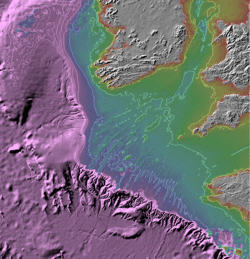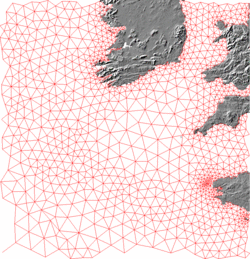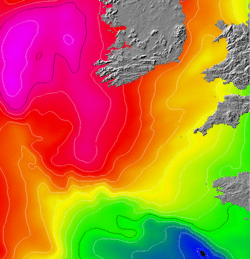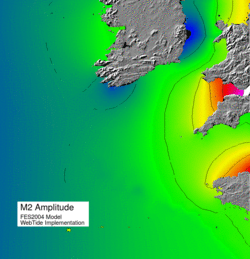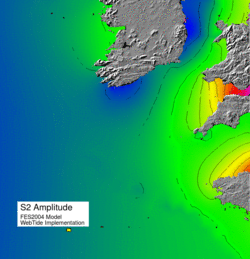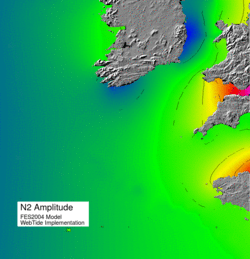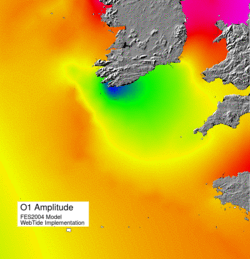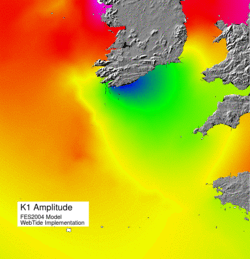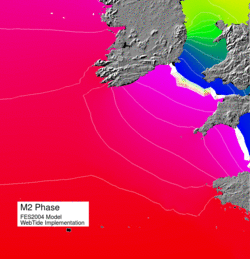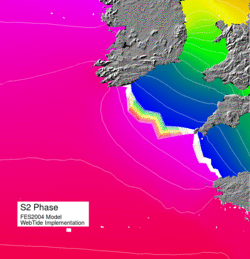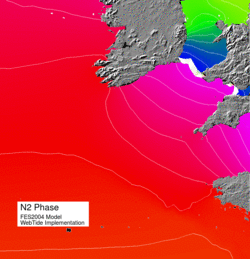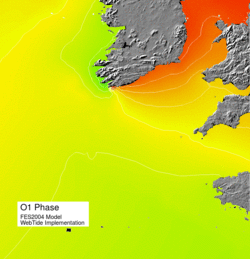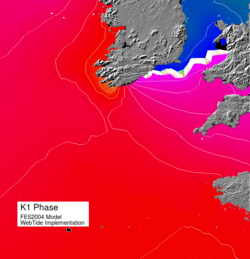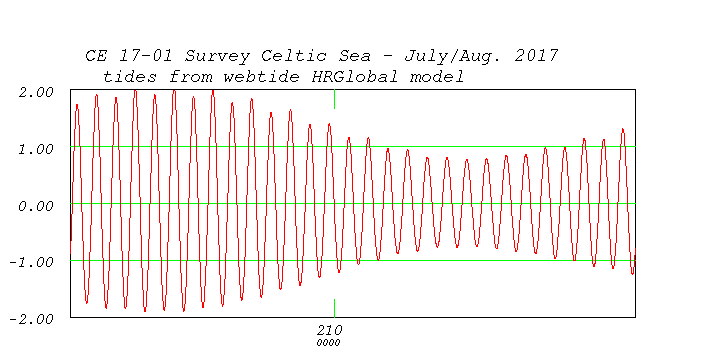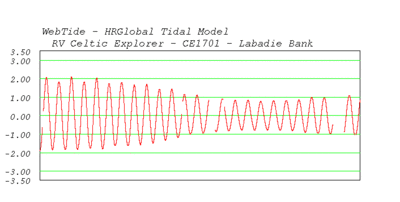
|
WebTide - HRGlobal
This is the WebTide solution, based on inputting the
instantaneous time and position of the vessel as it moves
back and forth across the HRGlobal triangulated network (see
mesh diagram above) available in this area.
|
|
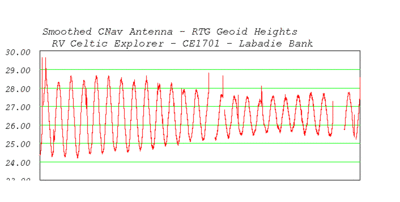
|
CNav - RTG Geoid Heights - Smoothed
LEFT: These are the antenna heights provided in real time,
shifted according to the EGM08 ellipsoid separation model
and then low-pass filtered to remove the heave.
As can be seen, a very clean tide-like signal is clear,
mimicking the spring to neap transition predicted by
Webtide.
RIGHT: this is the difference between the smoothed antenna
trajectory and Webtide solution (mean removed). As can be
seen, the main residual is an M2 period signal with about
20cm amplitude - this is probably a failure of the global
tide model. Superimposed on that is a long period drifting
which is probably the non-tidal residual due to the two low
pressures and gales that passed through during the survey.
|
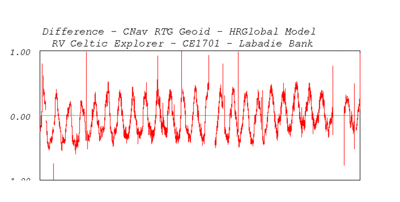
|
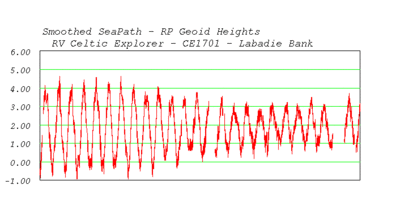 |
Seapath RP Geoid Heights - Smoothed
LEFT: These are the similarly filtered height solutions
available out of the Seapath 330+ system. The same spring
neap ctycle is seen, but now with a superimposed noise.
Note that they are a trajectory of the RP, not the antenna.
They have already been reduced to the geoid and reflect the
WLZ value seen in the installation telegrams
RIGHT: the differences w.r.t. Webtide. The same M2 residual
is seen, but superimposed now is a higher noise content
reflecting the lower vertical height quality coming out of
the Seapath.
|
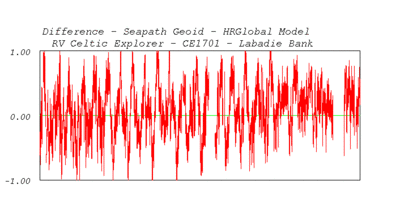
|
|
|
|
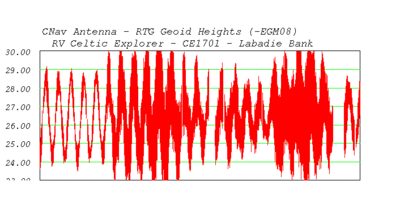
|
CNav Antenna RTG Geoid Height - unfiltered
This shows the vessel heave superimposed. One can clearly
see the initially low seastate followed by the two gales
events.
LEFT: the geoid trajectory - RIGHT : the ellipsoid
trajectory
The difference being the EGM08- separation model applied
(averaging ~ 55m).
|
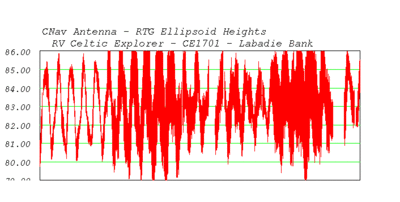
|
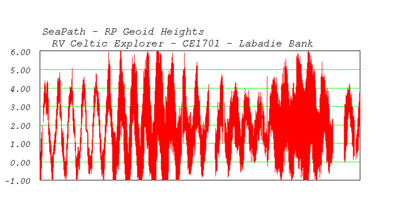
|
Seapath RP Geoid Height - unfiltered
Similarly with heave included. At low seastates one can see
the vertical noise anomalies that show up in the filtered
data superimposed.
Same ~55m offset. However, as is seen from the following two
plots, the internal Seapath separation model and the EGM08
model differ in their opinion of the separation surface
slope in the CE1701 area.
|
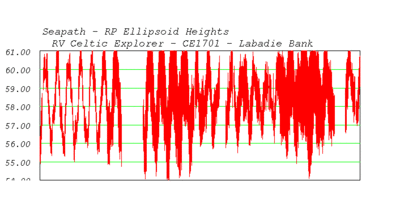
|
|
|
|
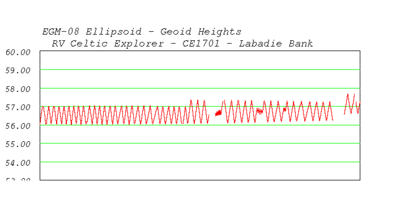
|
EGM08 Separation Model
Using the shiptrack, this shows the variation in the
EGM08 Ellipsoid-Geoid model as the vessels steams back and
forth from East to West.
|
|
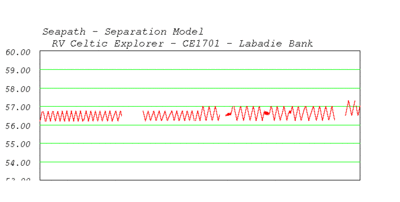
|
Seapath embedded Separation Model
Derived directly from the INGGA telegrams output from the
Seapath.
As can be seen, this is clearly not EGM08. It predicts that
the slope of the separation surface is flatter than EGM08.
|
|
